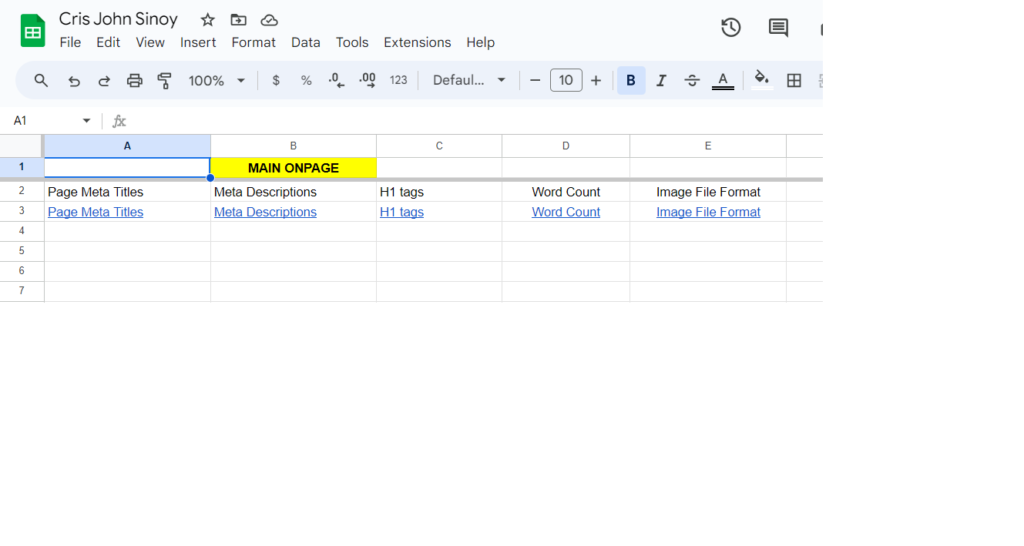On site SEO services work sample

Are you looking for ways to increase your website visibility and attract more traffic? The answer may beright in front of you– On-Page Optimization strategies. On-Page Optimization is one of the most important aspects of SEO and involves optimizing your website’s content, structure, and HTML code to improve its rank in search engine results pages (SERPs). In this article, we will explore the key components of On-Page Optimization, and how they can boost your website’s visibility.
What isOn-PageOptimization?
It is the practice of optimizing individual web pages to rank higher and earn more relevant traffic in search engines. This process involves optimizing various aspects of your website, including its content, keywords, HTML tags, images, and internal links. By improving your website’s On-Page Optimization, you can enhance the user experience, increase your website’s relevancy and authority, and ultimately, boost its search engine ranking.
How can it boost your website visibility?
It can boost your website’s visibility in the following ways:
- Improved Search Engine Rank: On-Page Optimization helps search engines better understand your website’s content and relevance, resulting in higher rankings in SERPs.
- Increased Organic Traffic: Higher search engine rankings translate to increased organic traffic, as users are more likely to click on websites that appear higher in SERPs.
- Better User Experience: On-Page Optimization enhances user experience by making your website more user-friendly, mobile-responsive, and visually appealing. This, in turn, encourages users to stay longer on your website and engage with your content.
Key components of On-Page Optimization
URL structure
Website’s URL is important On-Page Optimization technique because it makes easier for search engines to understand the content. Use clear, concise, and descriptive URLs that accurately represent the page’s content and contain relevant keywords.
Page Title
The page title is the text that appears at the top of your browser window and in SERPs. A well-crafted page title should be concise, descriptive, and contain relevant keywords to help search engines and users understand what your page is about.
Meta Description
The meta description is a brief summary of your page’s content that appears below the page title in SERPs. It’s your chance to entice users to click on your link by providing a clear, concise, and engaging description of what your page offers.
Header Tags
Header tags (H1, H2, H3, etc.) are HTML tags that indicate the headings and sub-headings of your page. Using header tags properly helps search engines understand the structure of your content and its relevance to search queries.
Content
Content is king in the world of SEO. Creating high-quality, relevant, and engaging content is one of the best ways to improve your website’s search engine ranking and attract more traffic. Use relevant keywords naturally throughout your content, and make sure it’s readable, informative, and useful to your audience.
Images
Images can enhance your website’s user experience and help convey important information. Optimize your images by compressing them, using descriptive file names, and adding alt text tags that accurately describe the image.
Internal Linking
Internal linking is an On-Page Optimization technique that involves linking to other pages on your website. This helps search engines understand the structure of your website and the relationships between pages. Use relevant anchor text to link to other pages on your website, and make sure the links are accessible and easy to navigate.
Mobile Responsiveness
With the rise of mobile devices, it’s essential to make your website mobile-responsive. A mobile-responsive website provides a seamless user experience across all devices, which can improve your search engine rankings and attract more traffic.
In conclusion, On-Page Optimization is a critical aspect of SEO that can enhance your website’s visibility, attract more traffic, and improve your search engine rankings. By optimizing your website’s content, structure, and HTML code, you can create a user-friendly, informative, and engaging website that both search engines and users will love.




